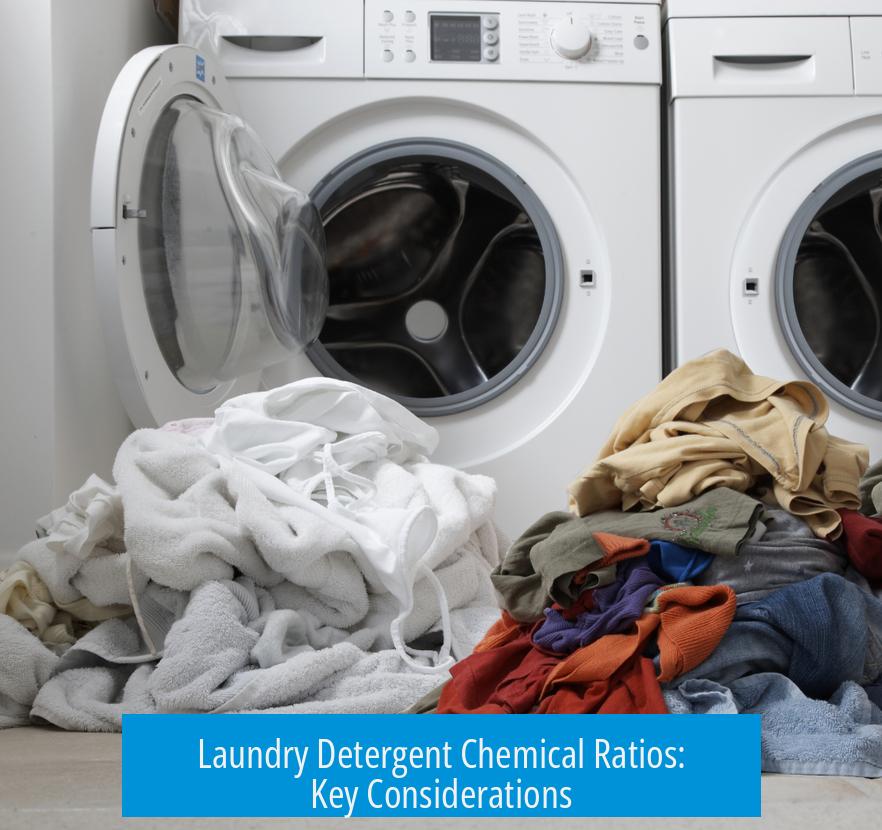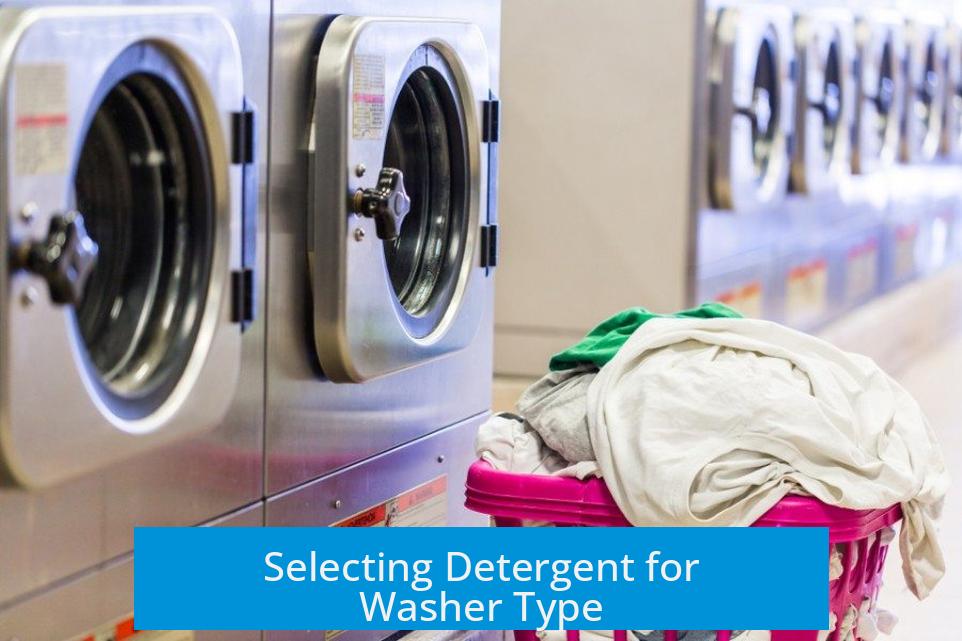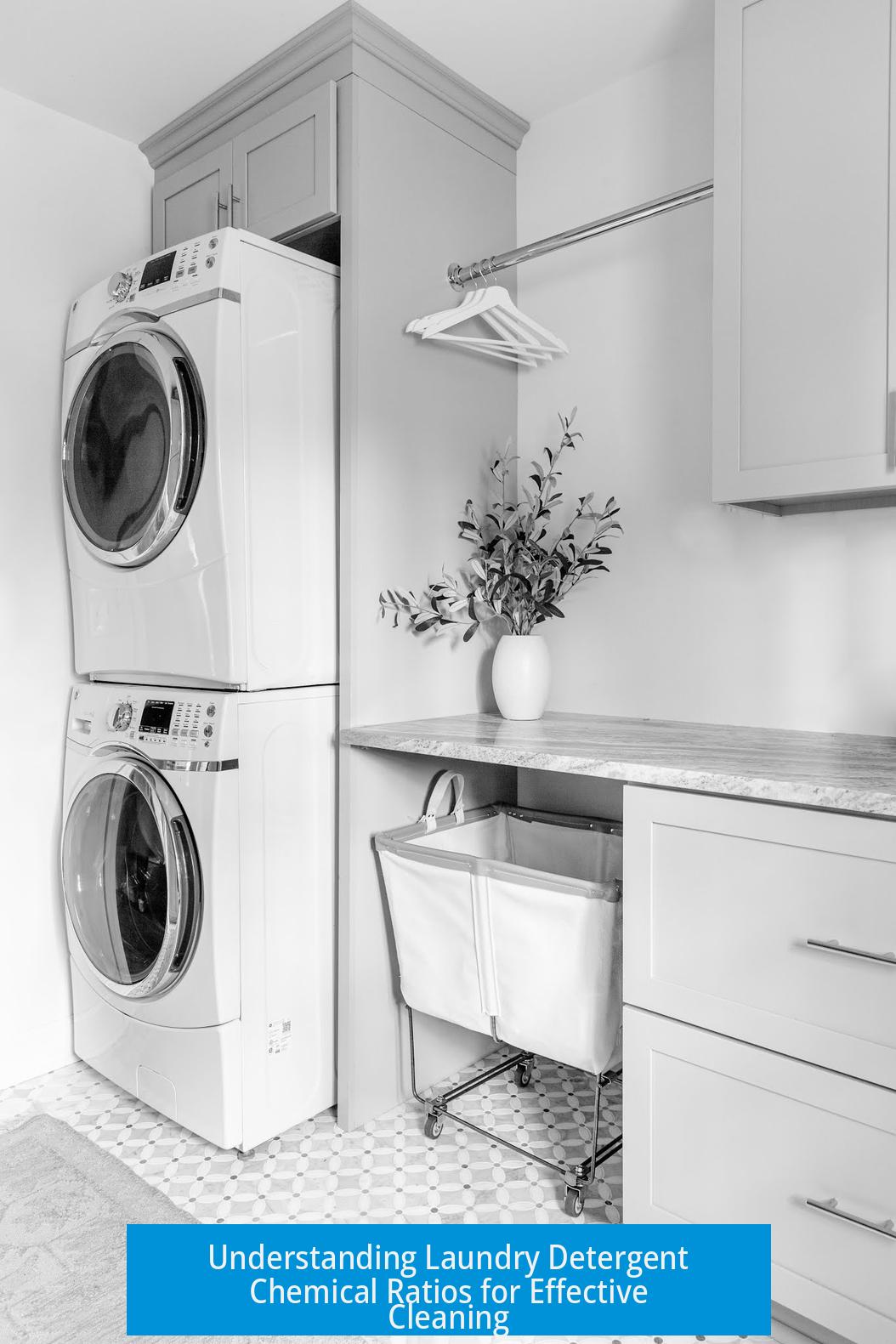Laundry Detergent Chemical Ratios: Key Considerations

Laundry detergent chemical ratios depend primarily on following the product instructions tailored to your washer type and laundry load, rather than specific chemical formulas. Manufacturers design detergents for various machines, and correct dosing ensures effective cleaning without residue.
Selecting Detergent for Washer Type

- Choose detergent formulated for your washer: traditional top-loading, high-efficiency (HE), or front-loading.
- High-efficiency detergents typically have concentrated formulas requiring smaller doses.
- Some formulas cater to both types; verify compatibility on the packaging.
- For sensitive skin, pick natural, fragrance-free, or hypoallergenic detergents.
Adding Detergent Correctly
Washer type affects detergent placement and dosing:

- Front-loading washers: Detergent goes into a sliding drawer. The machine auto-dispenses during cycles.
- Top-loading washers: Detergent is added directly to the tub, often after water fills but before laundry.
Always refer to your washer’s manual for exact detergent compartment locations and instructions.
Optimal Detergent Amounts and Chemical Ratios

Product labels guide the precise detergent quantity. It varies by detergent concentration and load size. Overuse leads to excess foam and soap residue on clothes.
| Detergent Type | Typical Dose (per load) | Comments |
|---|---|---|
| High-Efficiency (HE) | 1-2 tablespoons | Concentrated; less is more |
| Regular Detergent | 1/4 – 1/2 cup | Varies with soil level and water hardness |
Exact chemical ratios in detergents (e.g., surfactants to builders) stay proprietary but influence cleaning power and sudsing behavior. Following dose instructions aligns with intended chemical balance.

Bleach Use and Chemical Additives
Including bleach requires precise measurement. Chlorine bleach keeps whites bright, while color-safe, non-chlorine bleaches gently brighten colored fabrics.

- Locate bleach dispenser near detergent drawer (front-loaders) or on washer tub rim (top-loaders).
- Measure bleach per label directions for your load size.
Summary of Laundry Detergent Chemical Ratios
- Detergent chemical ratios are managed via correct dosing based on product type and washer model.
- Use detergent amounts as prescribed to prevent residue and maximize cleaning.
- Washer design (top vs. front-loading, HE vs. conventional) influences detergent form and volume.
- Bleach addition requires exact measurement to maintain fabric brightness without damage.
- No explicit chemical formula ratios are generally public; volume and concentration guidance is key.
Unpacking Laundry Detergent Chemical Ratios: What You Really Need to Know

So, what are laundry detergent chemical ratios? Simply put, they’re the measured proportions of cleaning ingredients your soap contains, tailored for each washing style and fabric type. But here’s the catch — the precise formulas aren’t shouted from rooftops. Instead, clues lie in how we pick, measure, and use detergents with our washers.
Understanding these ratios ultimately helps you optimize washing results and protect your clothes — but the exact chemical percentages? Those remain largely under wraps, locked in labs and product secret vaults. Let’s dig into what we *do* know and what it means for your laundry.
Why Washer Type Shapes Your Detergent Game
Your washing machine is more than a spinny box — it demands specific detergent chemistry. Front-loading washers, often high-efficiency (HE) models, require detergents with precise low-suds formulas to avoid foam flooding the system. Conversely, traditional top-loaders can handle detergents with a higher suds formula.
Choosing the right detergent type means you’re indirectly respecting the chemical ratio balance built for that machine. Buy only HE detergent for high-efficiency or front-loaders. These products feature measured chemical blends designed to dissolve efficiently and protect your machine from build-ups.
And if you opt for “universal” detergents, they often compromise slightly on exact ratios to work in both machines — less aggressive chemicals to cover all bases. An important tip: always match detergent type to your washer model. It’s like giving your machine exactly the fuel it’s asking for.
How Much Detergent Is Too Much? The Art of Measurement
Here’s where detergent chemical ratios meet practical reality: dose. The amount you pour into your machine tiptoes the line between spotless clothes and scary soap residue. Why? Because chemical ratios are only part of the equation. If you add too much detergent—regardless of ratio—you risk overstaying your soap’s welcome on clothes.
Detergent packets clearly state how much to add per load size or soil level. Follow these directions like they’re a treasure map. Excess detergent leads to soap buildup, causing dingy clothes or even rinsing problems. Too little and your laundry may emerge uninspired, still sporting stains.
To put it bluntly: the **chemical balance within the detergent only works well when you dose correctly**. Think of it like a recipe. Even perfect ingredient ratios won’t taste right if you dump in twice the salt.
Adding Bleach: A Chemical Ratio Charged with Care
Bleach, one of laundry’s heavy hitters, deserves some love in this discussion. Whether chlorinated or color-safe, it enhances brightness but must be used in exact amounts. Your machine’s bleach dispenser is designed for measured dosing, ensuring bleach blends safely with detergent chemicals.
Just like detergent, read the bleach instructions and add accordingly. More bleach won’t mean whiter whites; it risks fabric damage and chemical residue. This precision echoes the same principle as detergent ratios: **chemical amounts matter hugely** in outcome and fabric health.
Recipe Ratios: Clear but Aggressive?
Investigating detergent formulas reveals your standard recipe spells out volume ratios clearly but sometimes feels “a little aggressive.” This suggests manufacturers aim for a potent cleaning punch by favoring certain chemicals in slightly larger proportions. It’s a balancing act — enough power to tackle stains without wrecking fabric or leaving residues.
If the ratio is too aggressive for your wash type or water hardness, it may cause excessive suds or fabric issues. Thankfully, detergent makers adjust the ratios behind the scenes for different market needs, machine types, and water conditions.
Really, Why Don’t We See Exact Chemical Ratios?
Manufacturers protect their unique formulas fiercely. Chemical ratios inside detergents involve trade secrets, patented blends optimized for cleaning efficiency, skin sensitivity, environmental safety, and machine compatibility. Revealing them could let competitors copy products or confuse everyday consumers.
What consumers get instead is detailed usage instructions, machine compatibility advice, and warnings against overdose. Those practical guidelines serve as proxies to encourage proper use, which safeguards the delicate chemical balance inside your detergent.
Your Takeaway: Mastering Laundry without a Chemistry Degree
- Match detergent type to your washer. HE detergents for front-loaders; standard for top-loaders.
- Measure detergent carefully. Follow package directions minute by minute to respect chemical ratios baked into the formula.
- Use bleach wisely. Add only the recommended amount and use the correct bleach type for colors or whites.
- Don’t overdose! More soap is not better soap. Too much detergent disturbs chemical balance and harms clothes.
By embracing these rules, you optimize the potency and harmony of chemicals flowing through your wash. Your clothes will thank you. And your machine? It keeps spinning happily, free of sudsocalypse.
“Laundry detergent chemical ratios might sound like rocket science, but follow your washer’s instructions and detergent directions, and you’ll be a cleaning pro in no time.”
So, the next time you stare at that tangled mess of detergent instructions and tiny measuring caps, remember: the secret formula is more a matter of measuring than mystifying. It’s chemistry simplified for your wardrobe’s sake. Now, go forth and wash with confidence!
How does washer type affect the detergent chemical ratios I should use?
Detergent amounts depend on your machine type. High-efficiency washers need low-sudsing detergents and less volume. Top-loaders may allow more detergent. Follow package instructions for your specific washer.
Where should I add detergent chemicals in front-loading versus top-loading machines?
For front-loaders, add detergent to the sliding drawer. For top-loaders, add detergent directly into the tub after filling it with water. Check your machine’s manual to confirm placement.
What happens if I use too much detergent in my laundry?
Excess detergent can leave soapy residue on clothes. It may also cause excess suds that affect washer performance. Use detergent amounts exactly as directed on the packaging.
How do bleach chemical ratios relate to detergent use during laundry?
Bleach should be measured carefully according to its instructions. It is added separately from detergent in a designated compartment. Using the right amount keeps whites bright without damaging fabrics.
Are there exact chemical ratios provided for laundry detergents in these instructions?
No detailed chemical ratios or formulas are provided. The guidelines focus on following manufacturer directions for detergent type and dosage based on washer model.





Leave a Comment